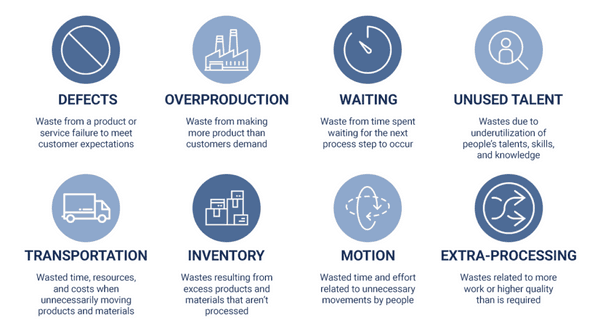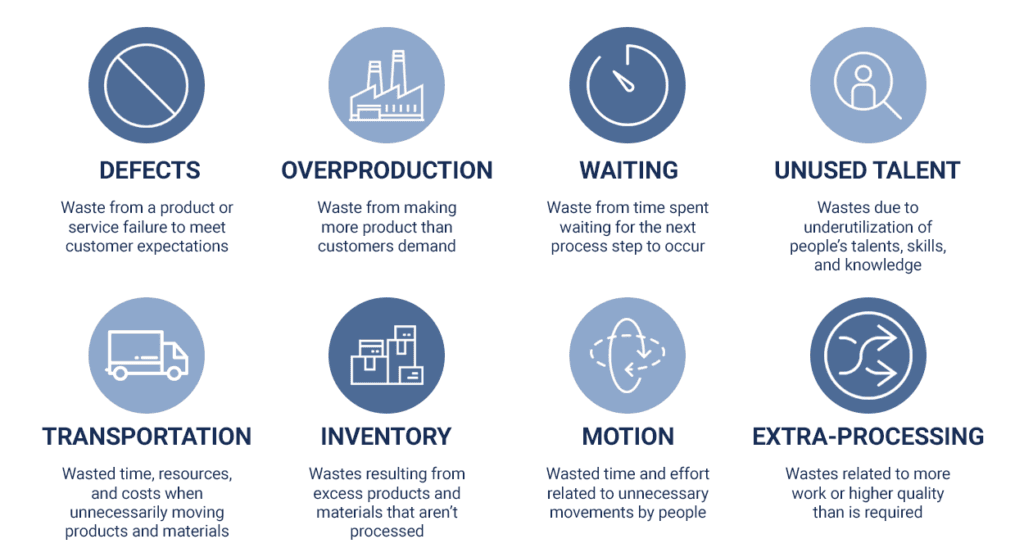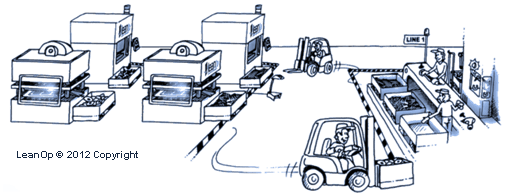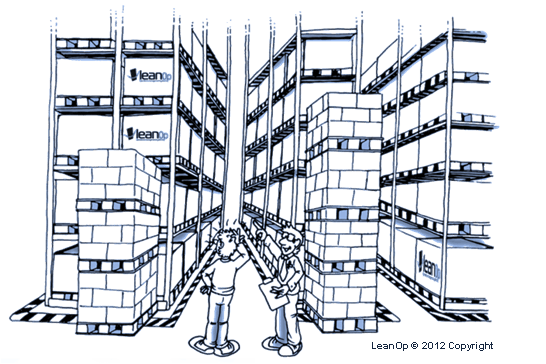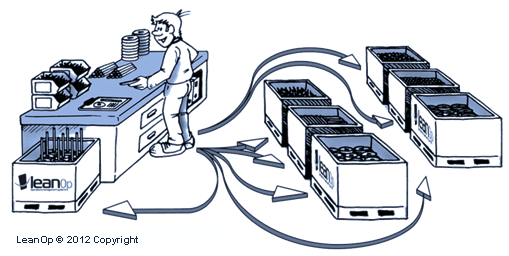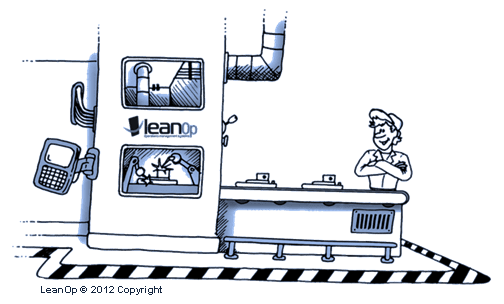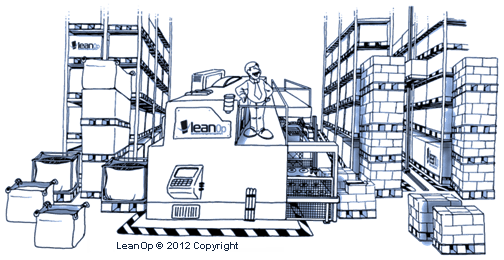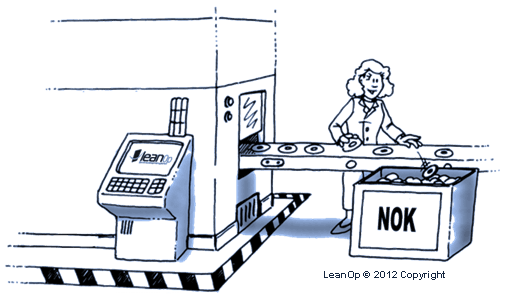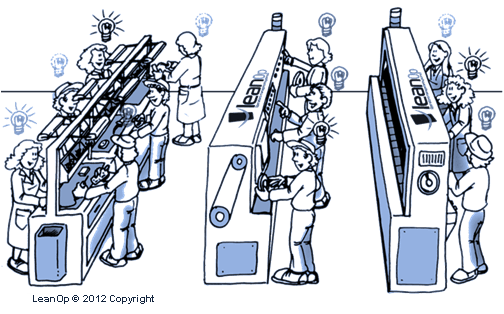The 8 Wastes of Lean
Curated from: theleanway.net
Ideas, facts & insights covering these topics:
11 ideas
·1.92K reads
16
Explore the World's Best Ideas
Join today and uncover 100+ curated journeys from 50+ topics. Unlock access to our mobile app with extensive features.
Muda - The original seven wastes
The seven wastes are Transportation, Inventory, Motion, Waiting, Overproduction, Overprocessing and Defects.
They are often referred to by the acronym ‘TIMWOOD’.
30
478 reads
Non-utilized talent or ‘Skills’
The 8th waste of non-utilized talent or ‘Skills’ of workers was later introduced in the 1990s when the Toyota Production System was adopted in the Western world.
So the new acronym is ‘TIMWOODS’
23
294 reads
Waste in transportation
Includes movement of people, tools, inventory, equipment, or products further than necessary.
Excessive movement of people and equipment can lead to unnecessary work, greater wear and tear, and exhaustion.
Some of the countermeasures to transportation waste includes developing a U-shape production line, creating flow between processes, and not over-producing work in process (WIP) items.
21
207 reads
Waste in inventory
Excess inventory can be caused by over-purchasing, overproducing work in process (WIP), or producing more products than the customer needs.
In-office inventory waste could be files waiting to be worked on, customers waiting for service, unused records in a database, or obsolete files.
Some countermeasures for inventory include:
- purchasing raw materials only when needed
- reducing buffers between production steps
- creating a queue system to prevent overproduction
23
170 reads
Waste in motion
Includes any unnecessary movement of people, equipment, or machinery.
In the office, wasted motion can include walking, reaching to get materials, searching for files, sifting through inventory to find what is needed, excess mouse clicks, and double entry of data.
Some countermeasures:
- making sure the workspace is well organized
- placing equipment near the production location
- putting materials at an ergonomic position to reduce stretching and straining
22
134 reads
Waste in waiting
This includes: 1) people waiting on material or equipment and 2) idle equipment
In the office, waiting waste can include waiting for others to respond to an email, having files waiting for review, ineffective meetings, and waiting for the computer to load a program.
Some countermeasures:
- designing processes to ensure continuous flow
- leveling out the workload by using standardized work instructions
- developing flexible multi-skilled workers who can quickly adjust
22
126 reads
Waste in Overproduction
Occurs when manufacturing a product or an element of the product before it is being asked for or required.
In an office environment, overproduction could include making extra copies, creating reports no one reads, providing more information than needed, and providing a service before the customer is ready.
3 countermeasures for overproduction:
- using a ‘Takt Time’ ensures that the rate of manufacturing between stations are even
- reducing setup times enables manufacturing small batches or single-piece flow
- using a pull or ‘Kanban’ system can control the amount of WIP
23
118 reads
Waste in Over-processing
Over-processing refers to doing more work, adding more components, or having more steps in a product or service than what is required by the customer.
In the office, over-processing can include generating more detailed reports than needed, having unnecessary steps in the purchasing process, requiring unnecessary signatures on a document, double entry of data, requiring more forms than needed, and having an extra step in a workflow.
One simple way to counter over-processing is to understand the work requirements from the standpoint of the customer.
22
92 reads
Waste in Defects
Defects occurs when the product is not fit for use.
4 countermeasures for defects:
- look for the most frequent defect and focus on it
- design a process to detect abnormalities and do not pass any defective items along the production process
- redesign the process so that does not lead to defects
- use standardize work to ensure a consistent manufacturing process
22
90 reads
Waste in Skills
The 8th waste is also described as the waste of unused human talent and ingenuity.
This waste occurs when organizations separate the role of management from employees.
The people doing the work are the ones who are most capable of identifying problems and developing solutions for them.
In the office, non-utilized talent could include insufficient training, poor incentives, not asking for employee feedback, and placing employees in positions below their skills and qualifications.
22
97 reads
Value Stream Mapping (VSM)
VSM is a Lean management method for analyzing the current state and designing a future state.
VSM is an effective tool for mapping out the processes involved, displaying the relationship between production processes in a visual manner, and for separating value-added and non-value-added activities.
22
114 reads
IDEAS CURATED BY
CURATOR'S NOTE
8 wastes of Lean can help you find bottlenecks in your organization's processes.
“
Adrian Anghel's ideas are part of this journey:
Learn more about leadershipandmanagement with this collection
How to create a productive workspace at home
How to balance work and personal life while working remotely
How to maintain focus and motivation while working remotely
Related collections
Similar ideas
16 ideas
14 ideas
Cost of Goods Sold Formula: A Step-by-Step Guide
mint.intuit.com
4 ideas
3D Printing Definition
investopedia.com
Read & Learn
20x Faster
without
deepstash
with
deepstash
with
deepstash
Personalized microlearning
—
100+ Learning Journeys
—
Access to 200,000+ ideas
—
Access to the mobile app
—
Unlimited idea saving
—
—
Unlimited history
—
—
Unlimited listening to ideas
—
—
Downloading & offline access
—
—
Supercharge your mind with one idea per day
Enter your email and spend 1 minute every day to learn something new.
I agree to receive email updates
